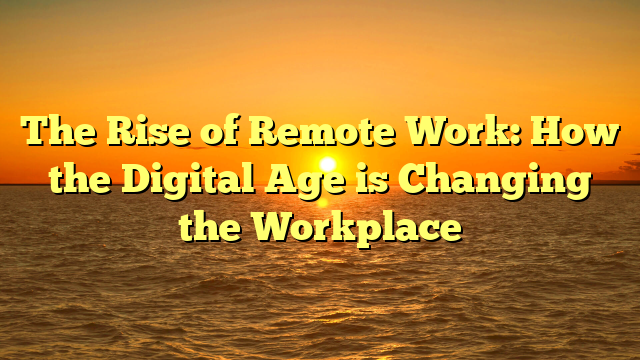Meta Description:
Explore how remote work is reshaping modern businesses, improving productivity, and offering new work-life balance opportunities in the digital era.
In the past decade, the global workforce has undergone a significant transformation. With the rise of high-speed internet, collaboration tools, and cloud-based technologies, remote work has moved from a niche option to a mainstream way of doing business. Once seen as birtoto a perk offered by forward-thinking startups, working from home is now a standard practice across industries.
The Digital Shift
The shift toward remote work accelerated dramatically during the COVID-19 pandemic. Companies were forced to adopt flexible work arrangements, and many discovered that productivity not only remained stable but often improved. Tools like Zoom, Slack, Google Workspace, and Microsoft Teams made virtual collaboration easier and more efficient than ever before.
Benefits for Employees
Remote work offers several advantages for employees:
- Flexibility: Workers can tailor their schedules to match their peak productivity hours.
- Work-Life Balance: Eliminating commutes allows more time for family, exercise, and personal development.
- Location Freedom: Employees are no longer restricted to living in expensive urban centers, opening opportunities to live anywhere.
Benefits for Employers
From a business perspective, remote work can reduce overhead costs, widen the talent pool, and improve employee retention. Companies can hire top talent from anywhere in the world, not just from local candidates.
Challenges to Consider
Despite the many advantages, remote work is not without its challenges. These include:
- Communication Gaps: Without face-to-face interactions, miscommunication can occur more easily.
- Isolation: Some employees may feel disconnected or lonely.
- Security Risks: Managing sensitive data remotely requires strict cybersecurity protocols.
The Future is Hybrid
Most experts believe the future of work will be hybrid—combining remote and on-site work. This model offers flexibility while retaining the benefits of in-person collaboration when needed.
Conclusion
Remote work is not just a trend—it’s a long-term shift in how we think about productivity, collaboration, and employment. As technology continues to evolve, companies that embrace flexible work models are likely to lead the way in innovation, efficiency, and employee satisfaction.
